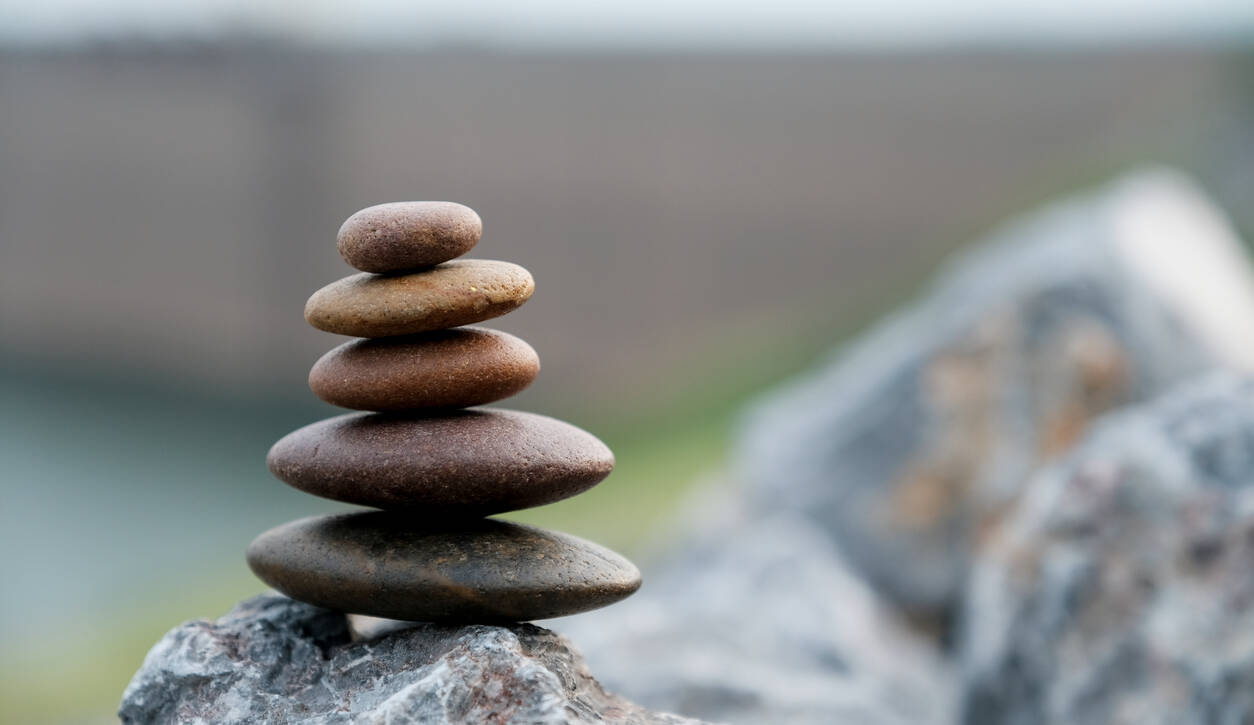
How does balance feel in your body? Is it a moment of stillness, a sense of ease, or simply the ability to navigate life’s ups and downs with grace?
For many, balance feels elusive—a fleeting state we struggle to maintain. But what if we stopped chasing it? What if, instead of aiming for balance as an endpoint, we embraced it as a continuous, fluid experience? As Albert Einstein wisely put it, “Life is like riding a bicycle. To keep your balance, you must keep moving.”
Balance: A Shift in Perspective
Rather than viewing balance as a static destination, consider its deeper meaning. The word itself has two definitions:
- Noun: An even distribution of weight enabling someone or something to remain upright and steady.
- Verb: To put something in a steady position so that it does not fall.
Balance isn’t something you get—it’s something you express. Each person has their own unique rhythm and flow, and the key to balance is adaptability. When we resist change, we become rigid. But like a rolling stone that gathers no moss, movement keeps us dynamic and resilient.
Five Practices to Cultivate Balance
Achieving balance isn’t about controlling every aspect of life—it’s about integrating it into your daily experience. Here are five practices to guide you toward your unique equilibrium:
1. Develop a “Balance Mindset”
Balance is not a productivity hack; it’s a state of mind. Instead of compartmentalizing life into work, family, self-care, and obligations, integrate balance into all aspects of your day. When balance becomes an internal experience rather than an external goal, life begins to feel more fluid and aligned.
2. Embrace Integration Over Separation
Many of us separate “work mode” from “life mode,” leading to burnout. Instead, think of balance as a seamless blend of your priorities, energy, and well-being. When you integrate balance into daily activities—whether it’s a mindful pause between meetings or intentional moments of connection with loved ones—it becomes a natural way of being.
3. Lose Balance to Find Balance
Growth happens at the edges of comfort. Sometimes, you must lose balance to find it—taking risks, stretching your limits, and embracing uncertainty. By pushing boundaries, you expand your capacity for resilience and adaptability, discovering a new version of balance that fits your evolving self.
4. Align Priorities with Values
One of the most effective ways to create balance is knowing what to say yes to. When an activity aligns with your core values, it naturally enhances your life. Take time to reflect on what truly matters and let your priorities reflect those values. This alignment brings clarity and a greater sense of ease in decision-making.
5. Practice Journaling for Reflection and Gratitude
Journaling is a powerful tool for cultivating balance. It creates space for self-reflection, allowing you to process emotions, track patterns, and appreciate the small joys in life. A daily gratitude practice—writing down things you’re thankful for—infuses positivity into your routine, fostering an inner sense of balance and contentment.
Final Thoughts: Balance Is a Dance, Not a Destination
True balance is not about perfection; it’s about presence. It’s about allowing yourself to move with life’s rhythms, knowing when to push forward and when to pause. By embracing adaptability, integrating balance into daily life, and aligning with your core values, you create a foundation of stability and ease.
So, stop chasing balance—live it, breathe it, and let it evolve with you.


